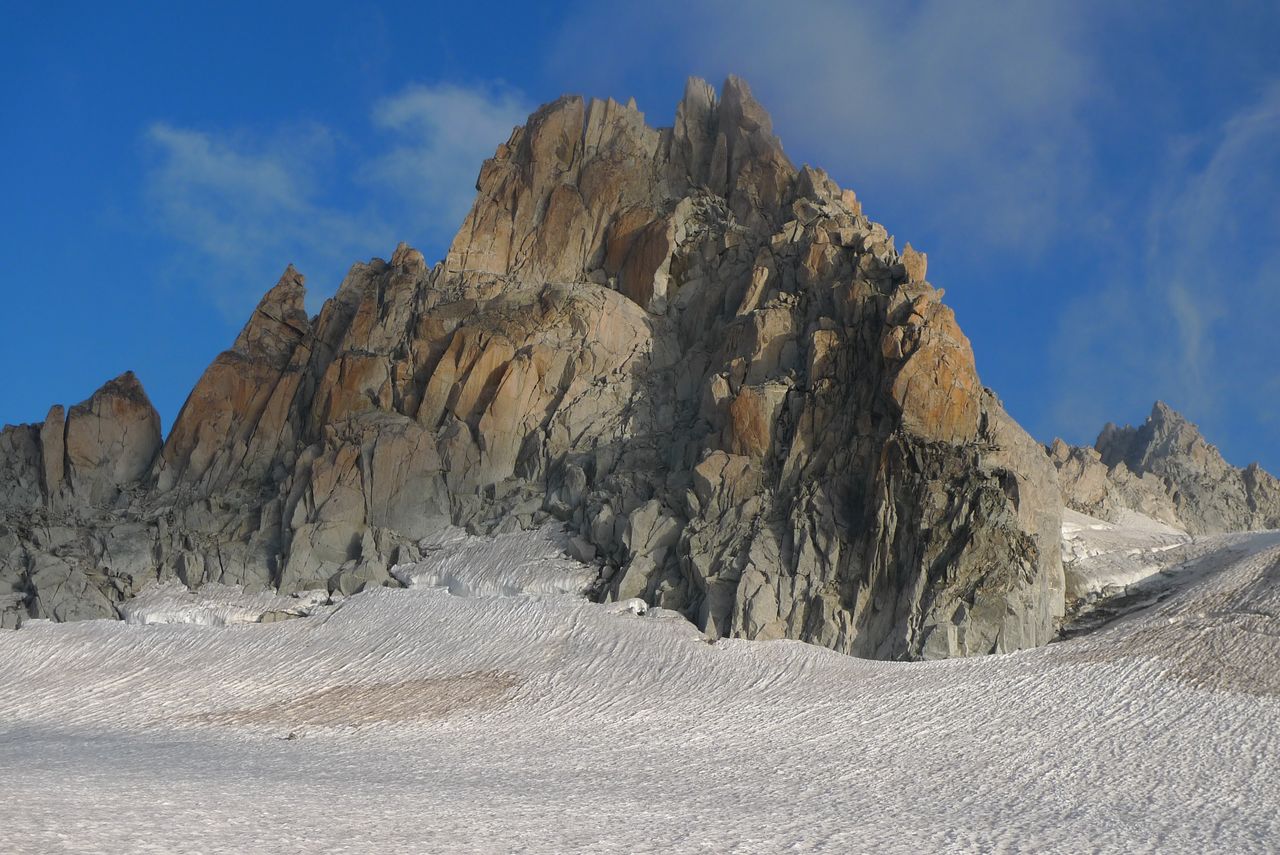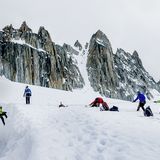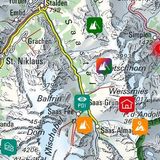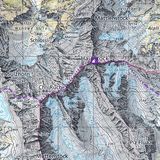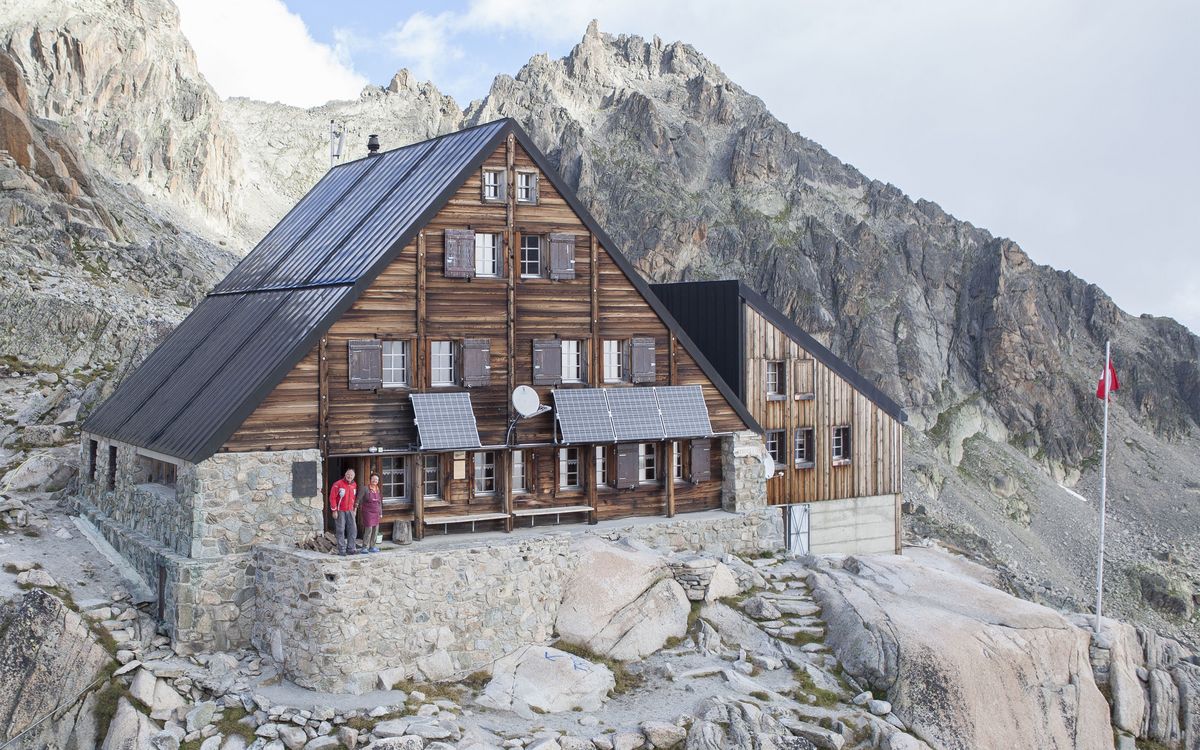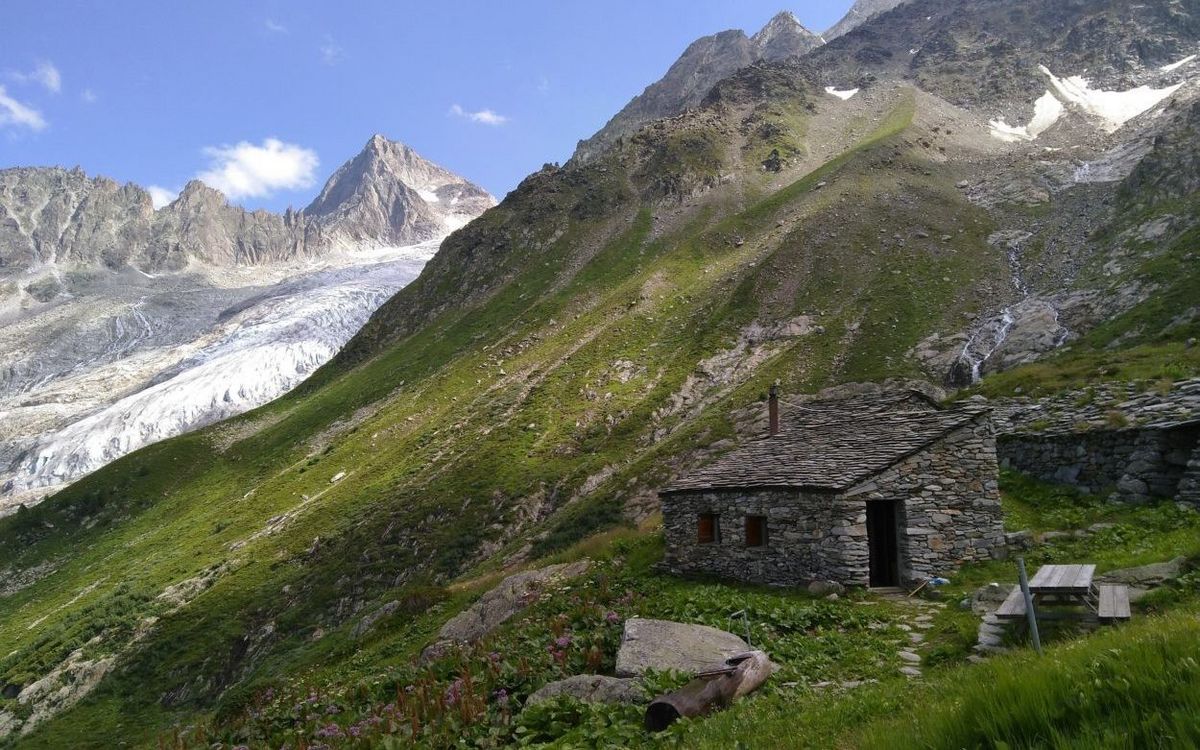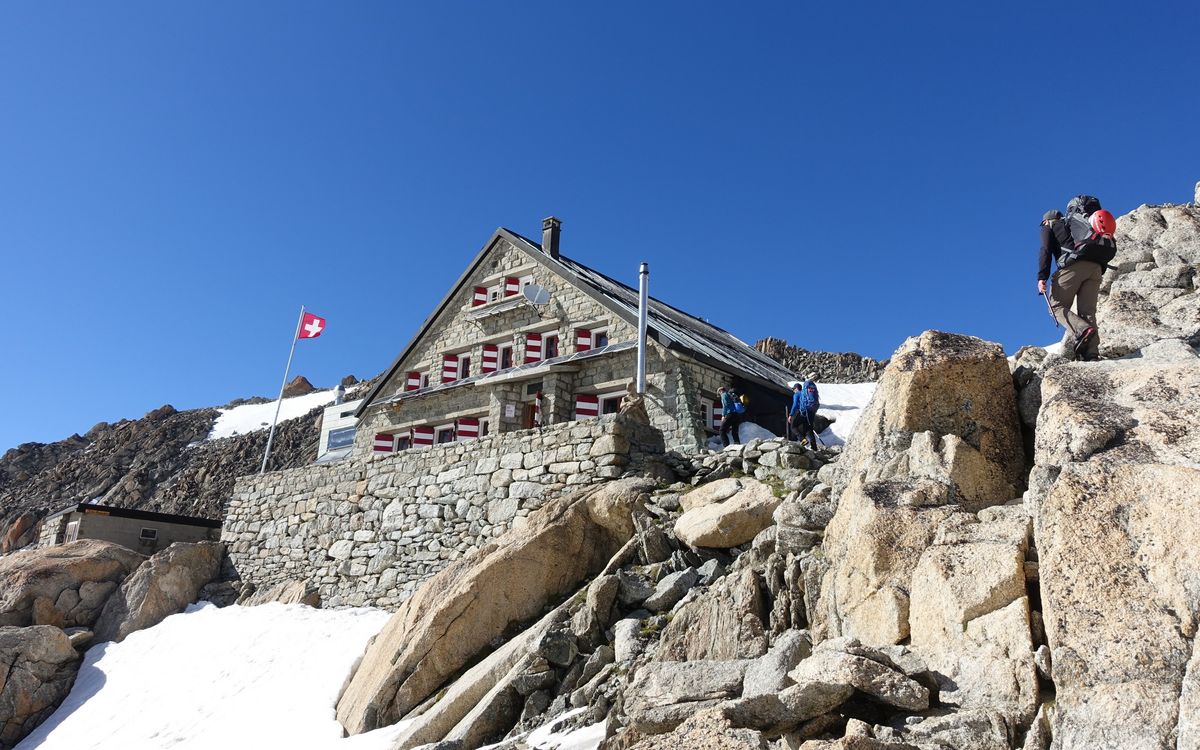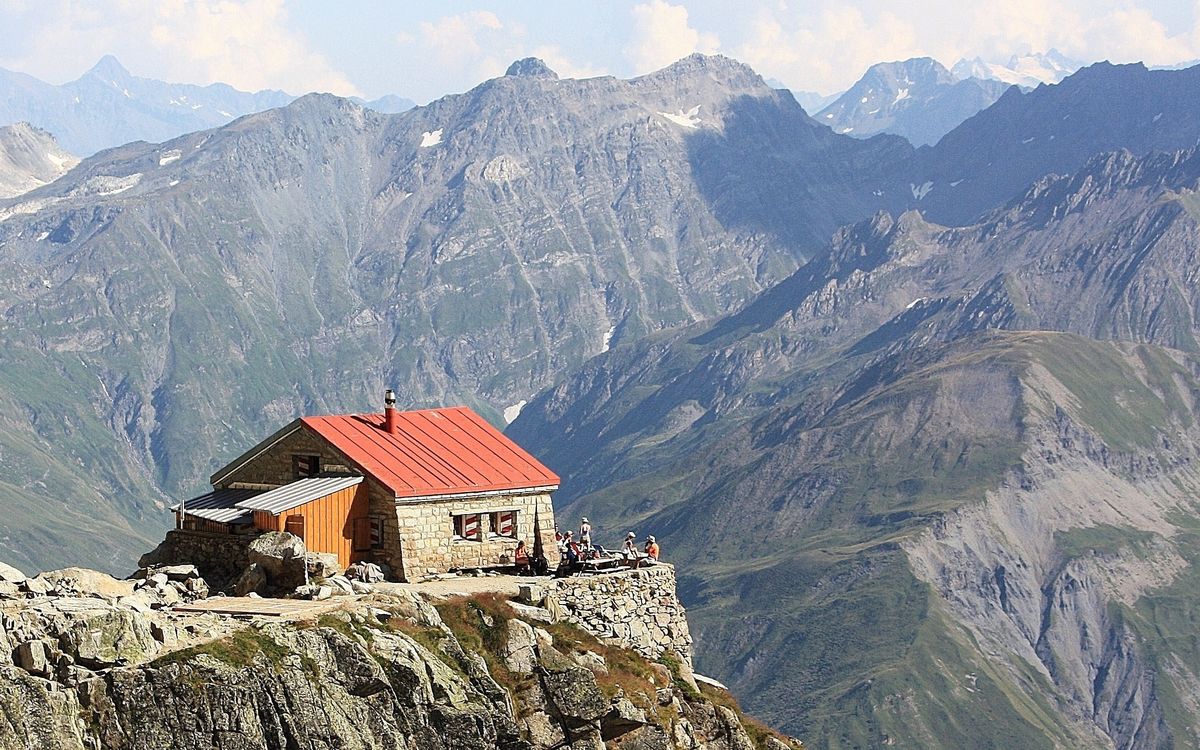Aiguille Purtscheller 3474 m Route archive
The Aiguille Purtscheller is located south of the Aiguilles du Tour. It is a freestanding spire with two closely spaced peaks. The pyramid shape makes this peak appear larger than it is: it stands just 180m above the the Glacier du Tour; a mere 70 m above the Plateau du Trient. The Aiguille Purtscheller however does offer some great 'plasir' climbs and classics. The west wall is known to have some tough routes that didn't make the guidebook. On this wall, some large rockfalls have occurred. To the south of the Aiguille Purtscheller are two more peaks. One is listed at 3393 m, the other (about 3332 m) is just NNW of the Col Supérieur du Tour. These outlying peaks also have several routes, but they are not described here.
The name Purtscheller, given in 1912, honours the famous Austrian's first ascent of the peak in 1890. Before then, it presumedly had no name. Ludwig Purtscheller (1849-1900) was born in Innsbruck. As a Tyrolean and 'Son of the Eastern Alps', the rock bastions of his homeland meant a lot to him. He spent every free minute in his mountains, developing an impressive, revolutionary and athletic climbing technique. On his tours in the Western Alps, he also discovered a talent for firn and ice. Soon he ventured - always without a guide and often solo - into some the most difficult mountain terrain in the Alps. He became friends with the brothers Emil and Otto Zsigmondy. Together with these two first-class alpinists, he achieved extraordinary ascents, such as the Kleine Zinne, the Ortler, Monte Rosa east face and Bietschhorn south face, and in 1885 the first complete traverse of Meije. Ludwig Purtscheller became a protagonist of 'leaderless' mountaineering, a kind of alpinism that was still largely frowned upon. He was active over all the massifs and was soon considered THE connoisseur of the Alps. Around 1700 peaks were climbed by Purtscheller in his rather short life!
In 1889 he was taken by German researcher and lexicon publisher Hans Meyer as an alpinist expert and companion, to German East Africa (Tanganyika, now Tanzania). Meyer had previously explored the area around Kilimanjaro and failed twice to climb it due to technical and political problems. Purtscheller, Meyer and his native companion Yohani Kinyala Lauwo succeeded together on October 6, 1889; it was the first ascent of the highest mountain in Africa, Kilimanjaro (5895 m). This ascent, via today's standard Marangu Route was the team's second attempt, after an ailment (probably altitude sickness) stopped them during the first. Meyer christened the highest point of Africa, "Kaiser Wilhelm-Spitze", though today it is known among geographers and alpinists by the locally sourced name "Uhuru Peak".
The fact that Meyer and Purtscheller were able to detect the fading remnants of a glacier cap on the summit of this volcano during their expedition is astonishing. Today, all glacial remnants have practically melted away, and are only to be seen in old photos.
Purtscheller was then restless on his return to the Alps, and opened countless new routes. In 1891 he also visited Elbrus in the Caucasus. He married relatively late (1895), but unfortunately his marriage short. Five years afterwards, Purtscheller took a big fall on the Aiguille du Dru and died in Bern as a result of his injuries. He was buried in Salzburg and left his wife, a daughter and a son behind.
